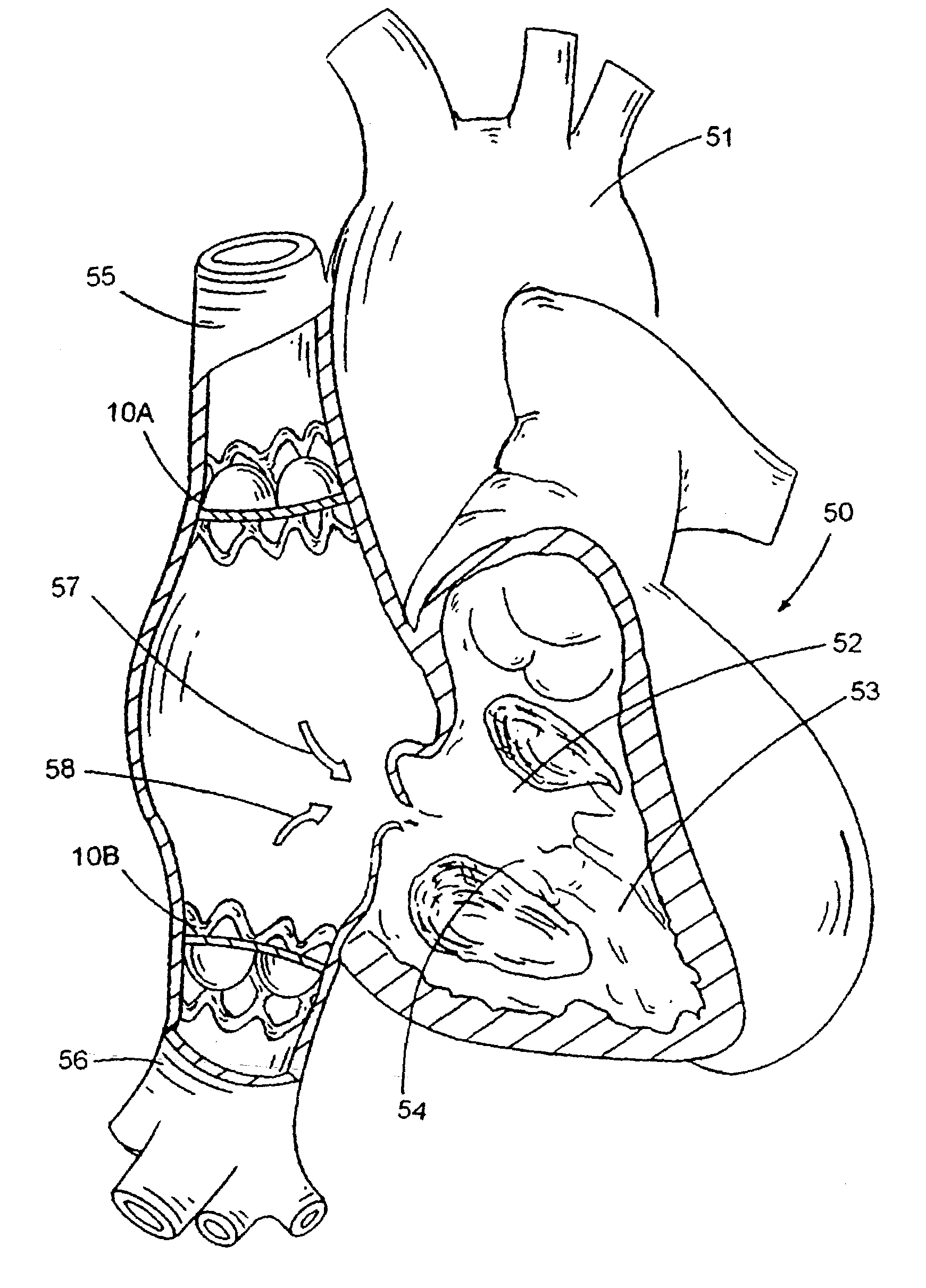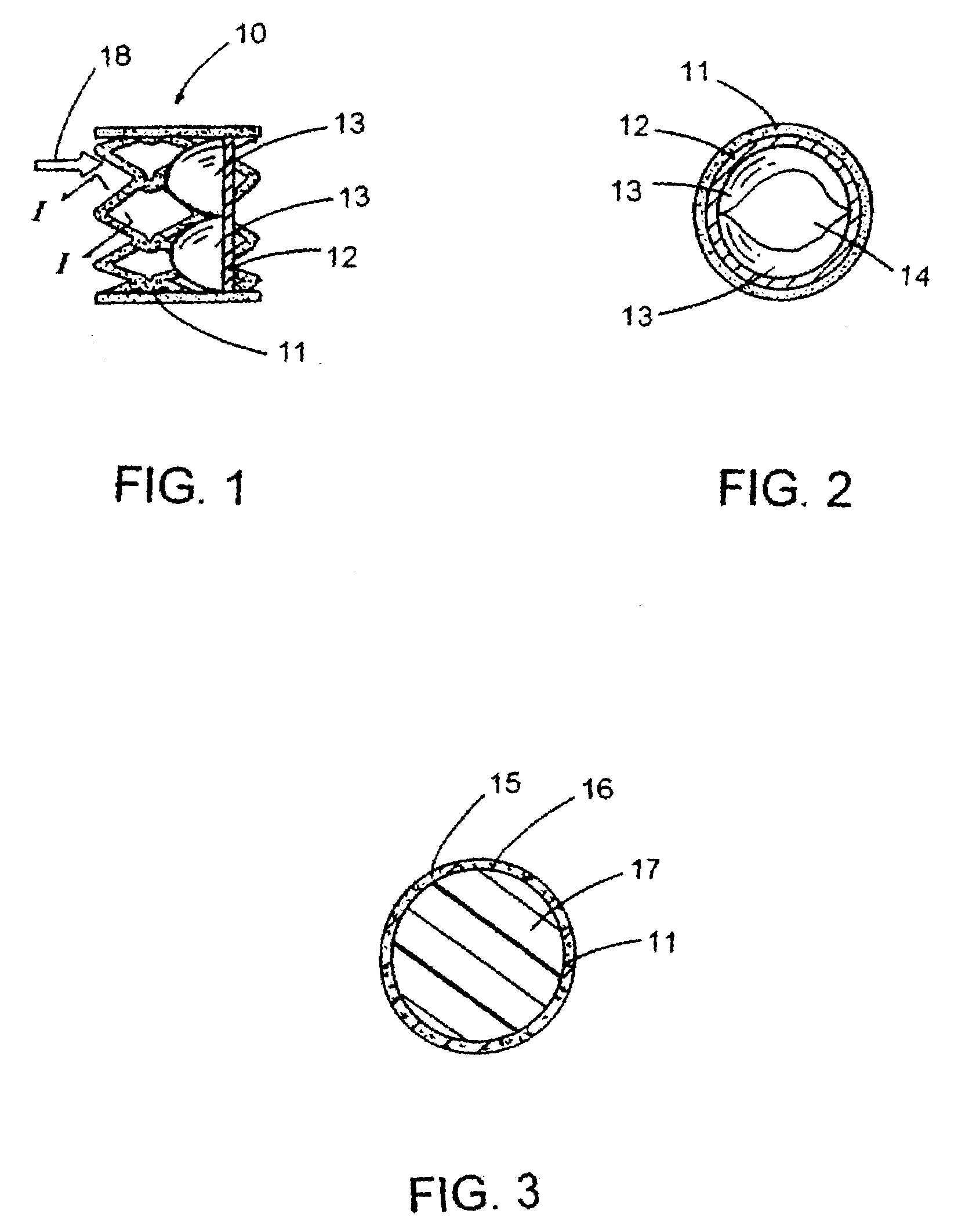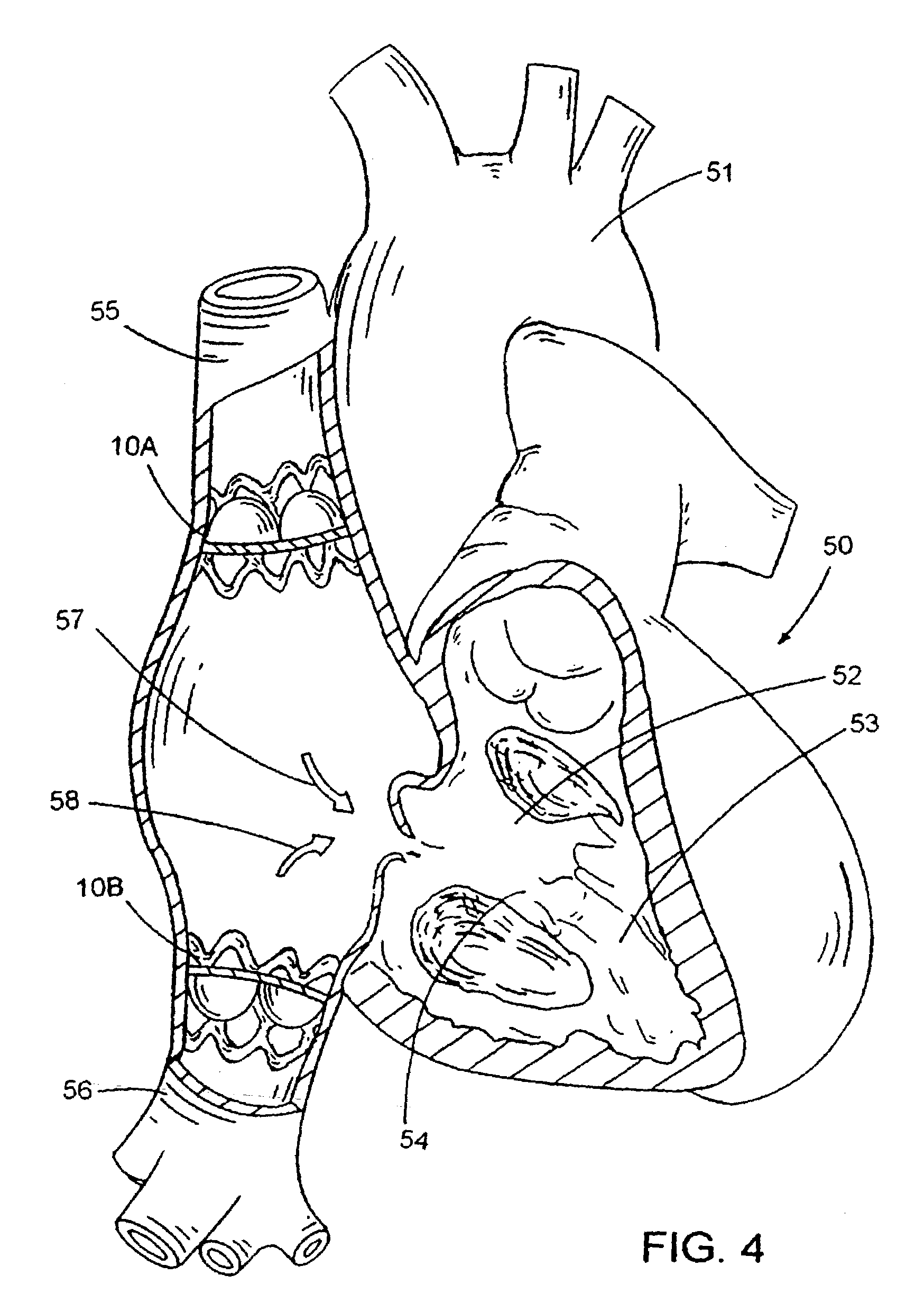Methods for reduction of pressure effects of cardiac tricuspid valve regurgitation
a technology of tricuspid valve and pressure effect, which is applied in the field of venous valve stenting, can solve the problems of general malaise, patients suffering from severe tr, and pressure having deleterious effects on the work of the heart and circulatory system
- Summary
- Abstract
- Description
- Claims
- Application Information
AI Technical Summary
Benefits of technology
Problems solved by technology
Method used
Image
Examples
Embodiment Construction
[0025]The preferred embodiments of the present invention described below relate particularly to venous valve bioprostheses and methods for reduction of pressure effects of cardiac tricuspid valve regurgitation. While the description sets forth various embodiment specific details, it will be appreciated that the description is illustrative only and should not be construed in any way as limiting the invention. Furthermore, various applications of the invention, and modifications thereto, which may occur to those who are skilled in the art, are also encompassed by the general concepts described below.
[0026]A stented valve or valved stent is a device to be placed inside a channel of the body that allows fluid flow in one direction and prevents fluid flow in an opposite direction. In a normal person, the superior vena cava functions to bring blood to the heart from the head and the inferior vena cava functions to bring blood to the heart from the liver and other parts of the body (kidney...
PUM
 Login to View More
Login to View More Abstract
Description
Claims
Application Information
 Login to View More
Login to View More - R&D
- Intellectual Property
- Life Sciences
- Materials
- Tech Scout
- Unparalleled Data Quality
- Higher Quality Content
- 60% Fewer Hallucinations
Browse by: Latest US Patents, China's latest patents, Technical Efficacy Thesaurus, Application Domain, Technology Topic, Popular Technical Reports.
© 2025 PatSnap. All rights reserved.Legal|Privacy policy|Modern Slavery Act Transparency Statement|Sitemap|About US| Contact US: help@patsnap.com



